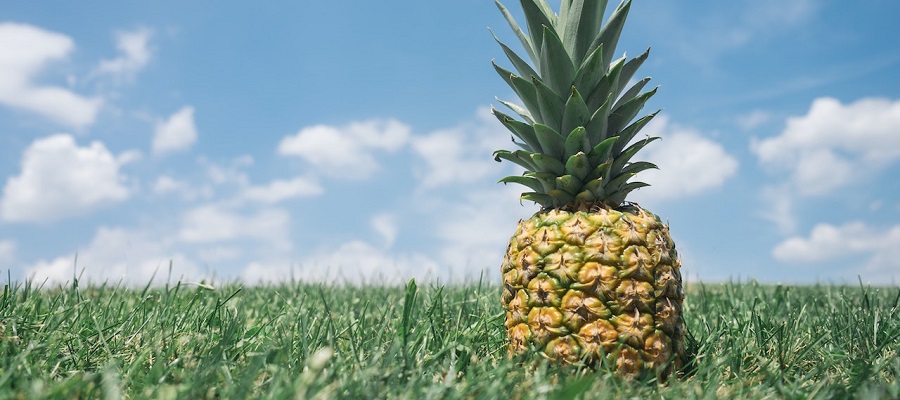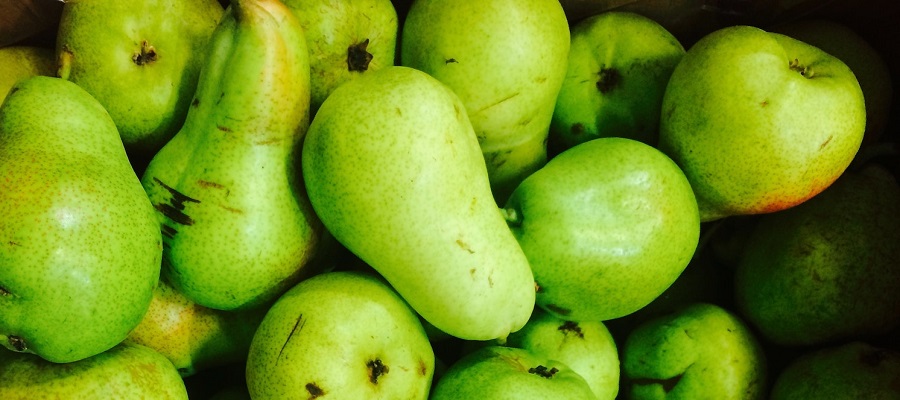Pineapples: The Sweet and Juicy Tropical Fruit
Introduction
Pineapples are a tropical fruit that are loved for their sweet and juicy flavor. They are a popular fruit all over the world and are used in a variety of dishes and drinks. In this article, we will explore the history of pineapples, their nutritional benefits, how to select and store them, and some delicious recipes and serving ideas.
| Attribute | Description |
|---|---|
| Kingdom | Plantae |
| Division | Tracheophyta |
| Class | Liliopsida |
| Order | Poales |
| Family | Bromeliaceae |
| Genus | Ananas |
| Species | Ananas comosus |
| Common Name | Pineapple |
| Origin | South America |
| Shape | Ovoid or cylindrical |
| Size | Varies, typically 4-10 inches (10-25 cm) |
| Weight | Varies, typically 2-5 pounds (1-2 kg) |
| Skin | Rough, scaly, and spiky |
| Color | Yellowish-brown with green or orange tint |
| Flesh Color | Yellow or white |
| Taste | Sweet and tangy |
| Texture | Firm and juicy |
| Edible | Yes |
| Nutritional Value | Good source of vitamin C and manganese |
| Uses | Eaten fresh, used in culinary dishes |
The Nutritional Benefits of Pineapples
Pineapples are packed with vitamins and minerals that are essential for good health. They are a great source of vitamin C, which helps boost the immune system and fight off infections. Pineapples also contain vitamin B6, which is important for brain function and the production of red blood cells. Other important nutrients found in pineapples include potassium, magnesium, and fiber.
| Nutrient | Amount per 100g |
|---|---|
| Calories | 50 kcal |
| Carbohydrates | 13.1 grams |
| - Sugars | 9.9 grams |
| Dietary Fiber | 1.4 grams |
| Fat | 0.1 grams |
| Protein | 0.5 grams |
| Vitamin C | 47.8 mg |
| Thiamin (Vitamin B1) | 0.1 mg |
| Vitamin B6 | 0.1 mg |
| Manganese | 0.9 mg |
| Copper | 0.1 mg |
| Potassium | 109 mg |
| Magnesium | 12 mg |
| Calcium | 13 mg |
| Iron | 0.3 mg |
| Vitamin A | 58 IU |
Consuming pineapples has been linked to a number of health benefits. They are a natural anti-inflammatory, which can help reduce inflammation in the body and prevent chronic diseases. Pineapples are also good for digestion, as they contain enzymes that break down proteins and aid in the absorption of nutrients.
How to Select and Store Pineapples
Choosing a ripe pineapple is important to ensure that it is sweet and juicy. Look for pineapples that are firm and heavy for their size, with a fragrant aroma. The leaves should be green and fresh-looking, and the skin should be free of bruises or soft spots.
Pineapples can be stored at room temperature for a few days before they ripen. Once they are ripe, they can be stored in the refrigerator for up to five days. To prepare a pineapple, cut off the top and bottom, then slice off the skin in a spiral motion. Cut the pineapple into slices or chunks as desired.
Pineapple Recipes and Serving Ideas
Pineapples are a versatile fruit that can be used in a variety of dishes and drinks. Here are some delicious recipes and serving ideas:
- Grilled pineapple: Slice pineapple into rings and grill until caramelized. Serve as a side dish or on top of burgers or sandwiches.
- Pineapple salsa: Combine diced pineapple, red onion, jalapeno, cilantro, and lime juice for a fresh and flavorful salsa.
- Pineapple smoothies and cocktails: Blend pineapple with yogurt, milk, and honey for a refreshing smoothie. Or mix pineapple juice with rum and coconut cream for a tropical cocktail.
- Pineapple upside-down cake: Arrange pineapple slices in the bottom of a cake pan, then pour cake batter on top. Bake until golden brown and serve with whipped cream.
Pineapple Fun Facts
Pineapples have a rich history and are full of interesting facts. Here are a few:
- Pineapples were first cultivated in South America, and were brought to Europe by Christopher Columbus.
- In the 1700s, pineapples were a symbol of wealth and status, as they were difficult to grow and transport.
- The word "pineapple" was originally used to describe pine cones, as they were thought to resemble pineapples.


